The 21 Most Low-Maintenance Pets You Can Own
When it comes to welcoming pets into your family, every pet needs to be cared for and loved. However, when you’re a busy person, it’s just not possible to spend every waking moment looking after a pet. That doesn’t mean you don’t deserve to bring an animal into your home—you just have to find the right one. Some pets need less grooming and attention; many are simply cheaper to own than some of the more high-maintenance options. So whether you’re looking for something that makes sense for your kids, for your working parent lifestyle, or for the limitations of your apartment, these are the low-maintenance pets you should consider taking home.
1
Betta fish
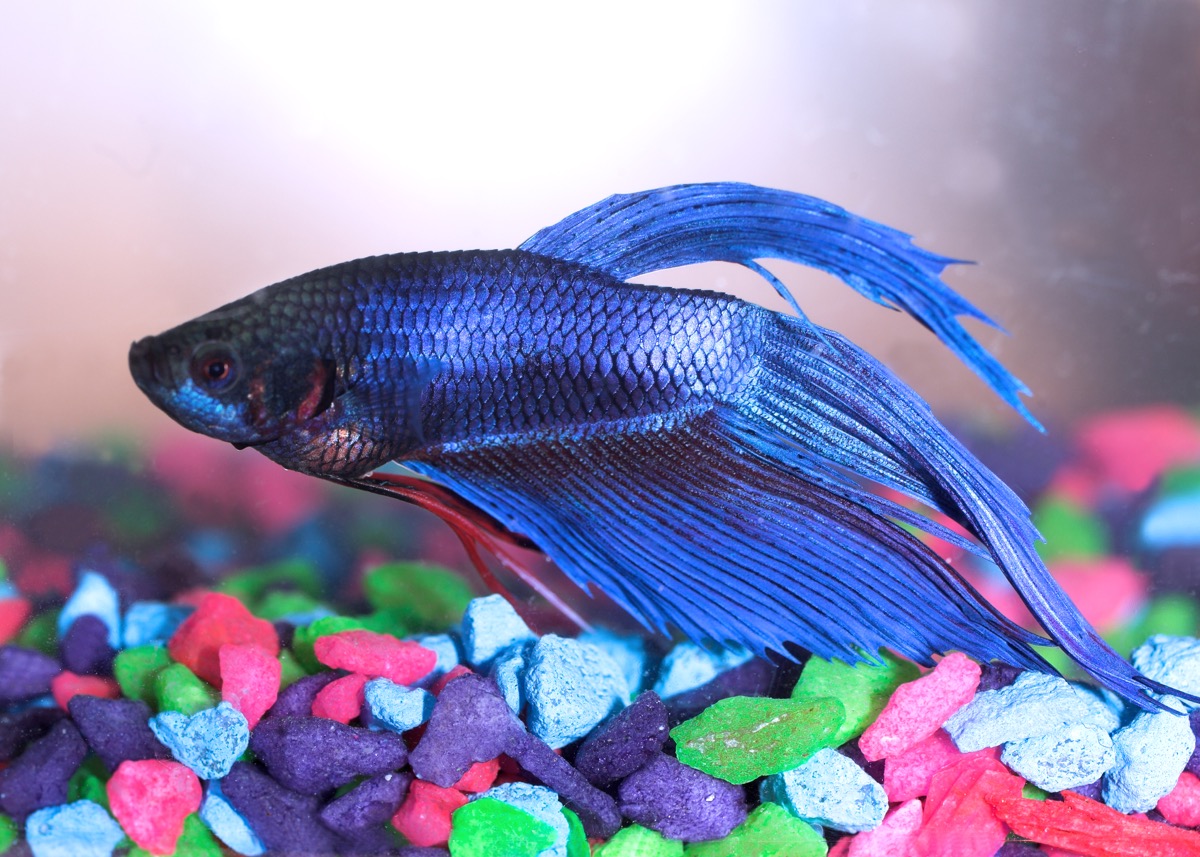
Fish are often “seen as low-maintenance pets” until people realize just how much work needs to be put into them, says Christopher Adams, founder of ModestFish. However, that’s usually because people pick the wrong kinds of fish. If you’re looking for a low-maintenance fish, go betta.
“Betta fish are stunning, really hardy, and you can have an awesome low-maintenance setup,” Adams says. He recommends buying a five-gallon aquarium kit, which is a perfect size for betta fish. “And once your tank is ready, you only need to feed them once a day—or get an automatic fish feeder—and replace 15 percent of the water each week.”
2
Pugs

Let’s face it, dogs aren’t ever really low-maintenance pets. They need a lot of love, attention, and affection. But if you do want to bring a precious pooch into your family, consider a more low-maintenance breed. JP, owner of beloved Instagram pug Aji, says that pugs are one of the easiest dog breeds to own.
“We’ve never taken him into a dog groomer. His short hair doesn’t need any trimming,” JP says. “And the truth is, we only walk him about 30 minutes a day, and play fetch or tug of war for about 10 minutes, and that’s enough to keep him in shape.” All that, alongside the small size of pugs, make them one of the most low-maintenance dog breeds.
3
Stick insects
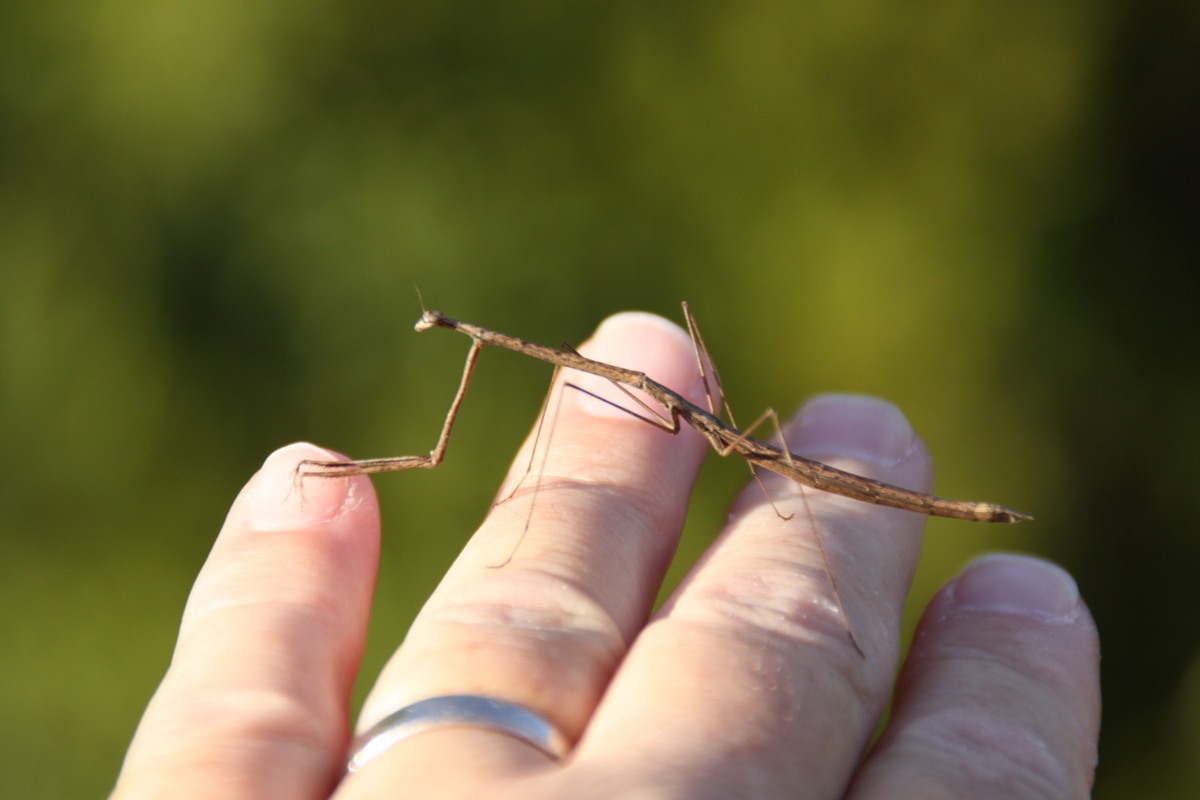
Pets aren’t limited to furry creatures or fish. Conservatory garden worker Elliot Blacker, founder of Evopure, recommends stick insects—also known as stick bugs—as the perfect low-maintenance pet. Their small, twig-like size makes them easy to home in small spaces like “small glass containers” or “cages around 12 inches tall,” and their dietary habits are not intense either. Blacker says they can live off a “diet of blackberries, oak, rose, and ivy.”
4
Rabbits

If you want a cute, cuddly pet, but aren’t ready to commit to a pup, consider a rabbit instead. Gilles Ventejol, founder of Animal Patient, recommends rabbits as a pet owner, despite being a specialist in cat and dog health.
“I got a dwarf rabbit upon the insistent and repeated requests of my children to have an animal,” he says. “I must say I’m quite pleased with the rabbit. She lives free in the flat and reaches her cage for drinking, relieving herself, or sleeping. The vet expenditures are minimal, and she eats basically hay and stale bread with sometimes a carrot or an apple. But at the same time, she is quite funny, curious, and very interested when something new happens at home.”
5
Turtles
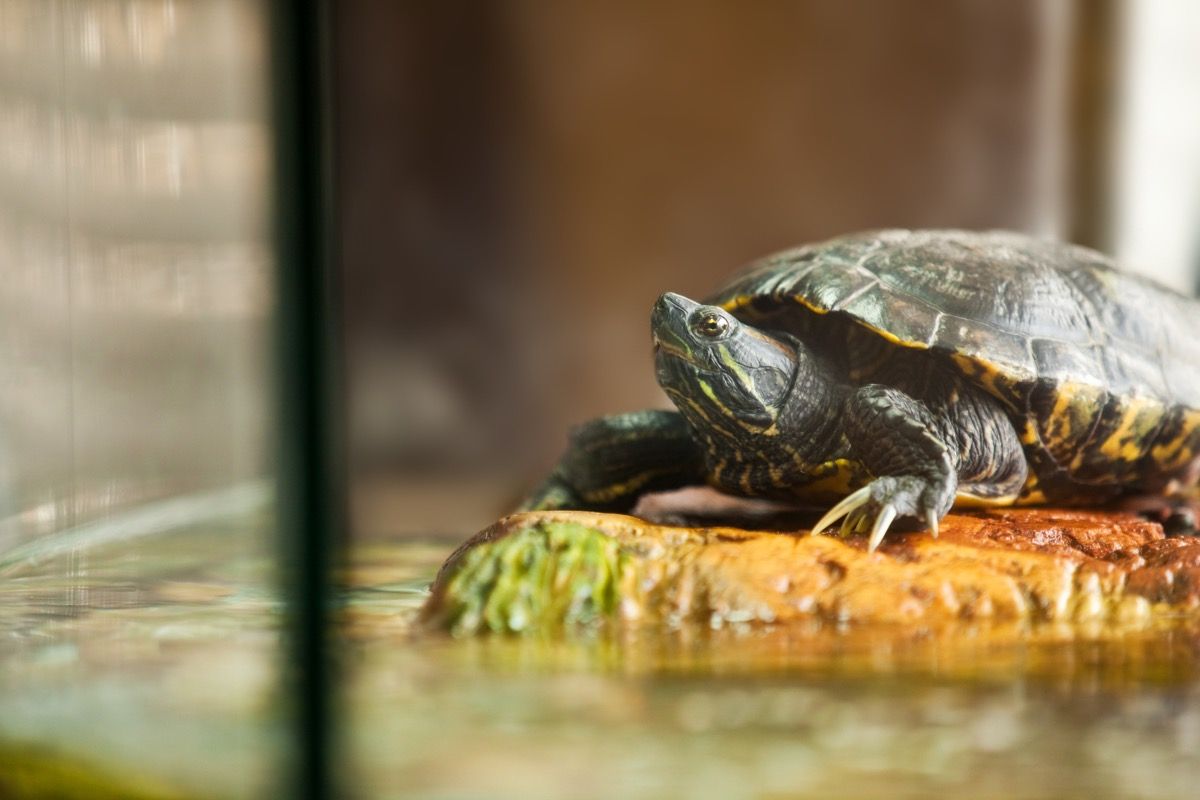
There are plenty of types of turtles out there to consider for a pet—approximately 270 to be exact, according to PetMD. Consider a smaller turtle that grows up to nine or twelve inches at most, like a painted turtle, if you’re looking for the kind you can put in a regular-sized terrarium.
In terms of diet, turtles are easy, as they “don’t need to be fed every day.” You only need to feed your turtle four to five times a week, and most turtles generally eat insects, fish, and dark, leafy greens. The key to taking good care of a turtle is maintaining water temperature, keeping clean water, and feeding them consistently—which isn’t a lot of work in terms of keeping pets. But one thing to note is that turtles can live for a while. For instance, a painted turtle can live up to 30 years.
6
Hermit crabs
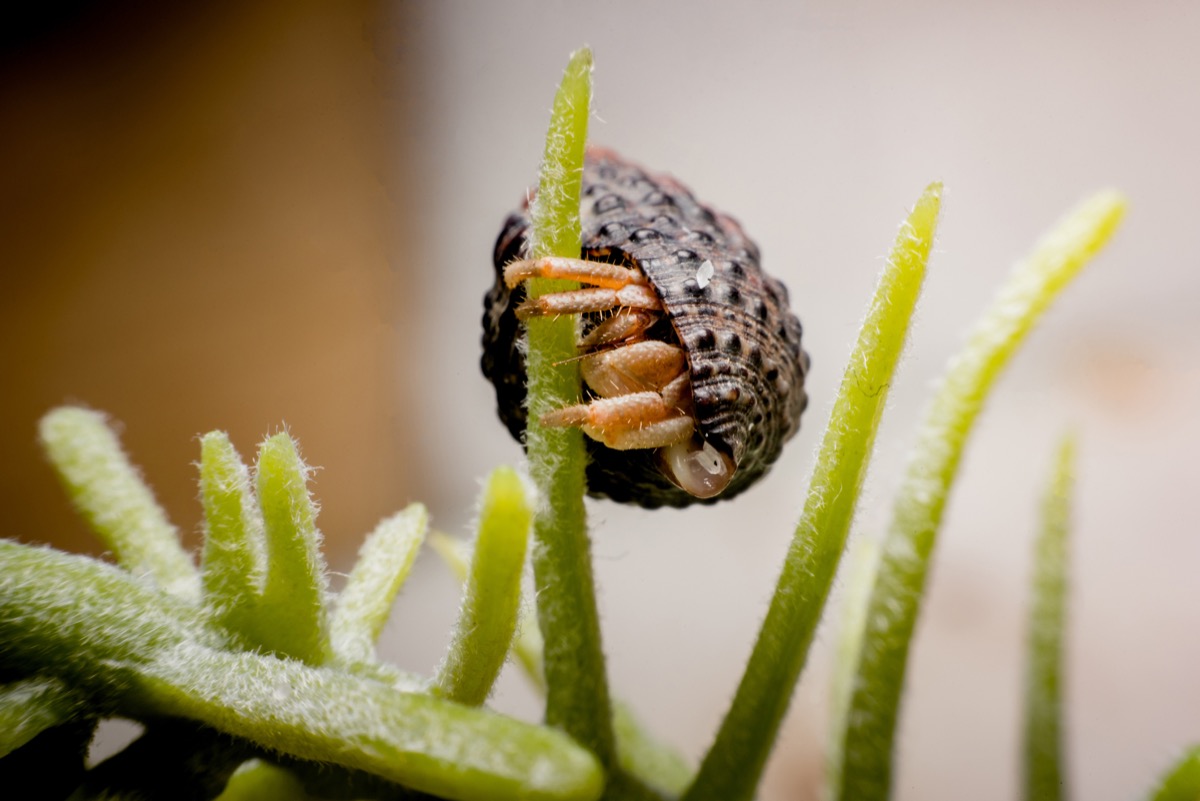
If the lifespan of a turtle intimidates you, go with a hermit crab instead! According to Pet Smart, hermit crabs really only live for 10 years at most, and only grow up to 6 inches long. All you need in terms of a home is a terrarium with at least five gallons of space that is out of direct sunlight, lined with “two to three inches of washed aquarium gravel or fine reptile bark bedding.” Plus, their diet consists of small pellet or powdered food.
7
Ants
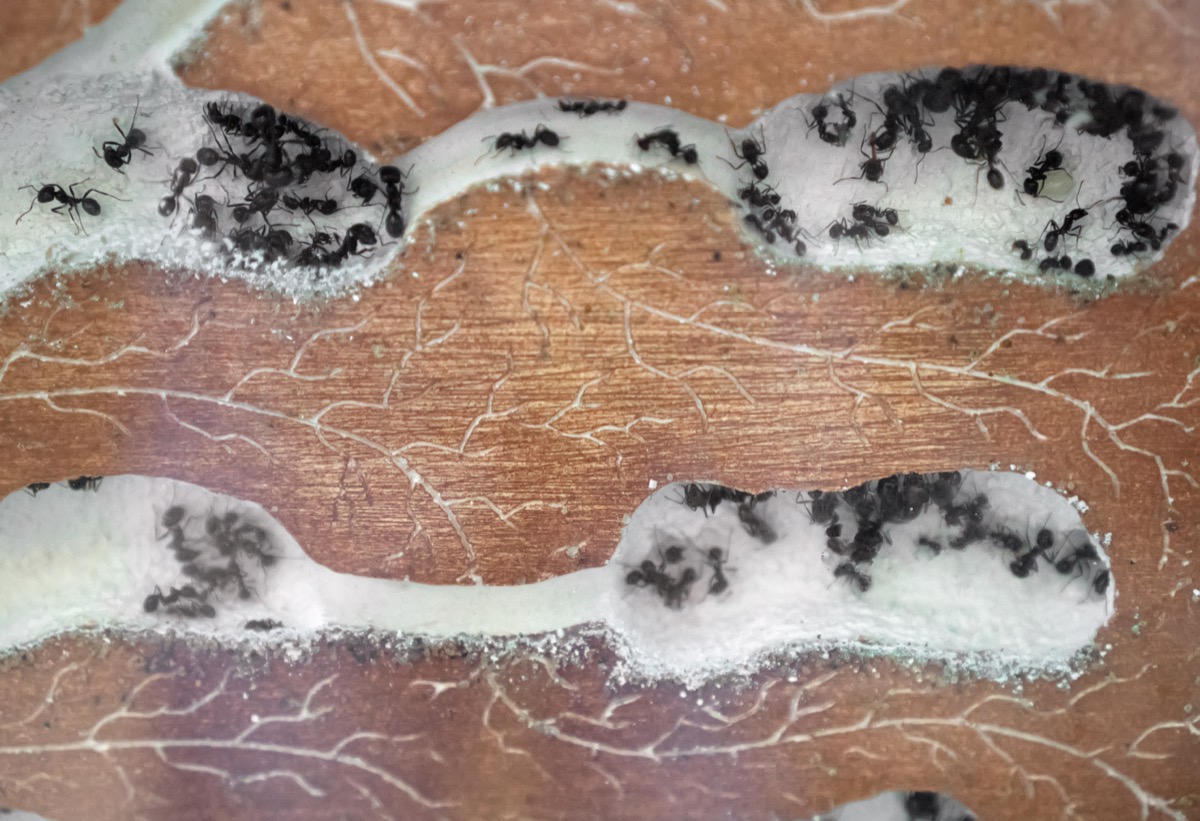
When you’re thinking of cute, cuddly pets to own, ants probably don’t pop into your mind. However, keeping ants is a cool, interesting way for young children to feel like they “own pets,” without parents having to feel like they need to spend a lot of time “taking care” of said pets.
With an ant farm, the ants do most of the work. All you need to do, according to Allie Layos of Wide Open Pets, is keep a temperature of somewhere between 60 to 70 degrees, cover the ants at night, give them sufficient water with either a damp cotton ball or a few drops, and provide foods like small pieces of fruits and vegetables. Also, be careful not to move the ant farm once ants have built their tunnels, as it might cause a collapse, which could kill or injure the ants.
8
Sea-Monkeys
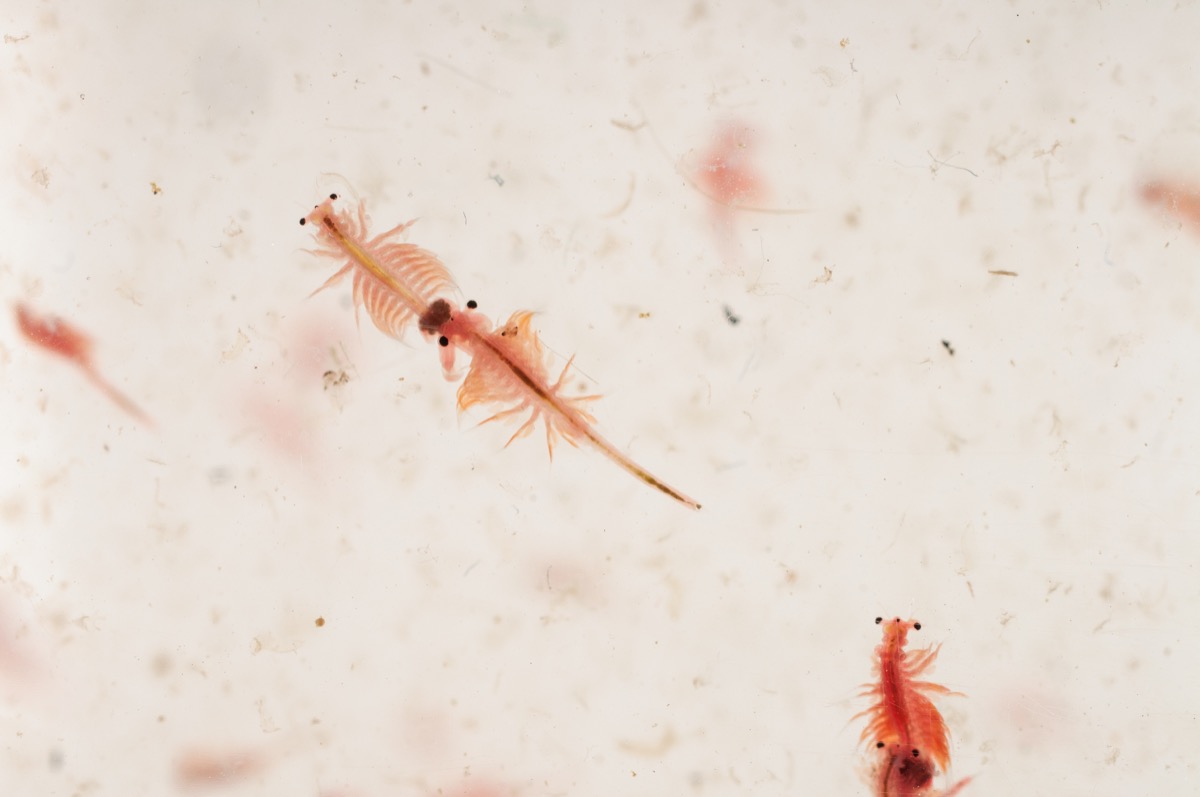
If turtles and hermit crabs aren’t your vibe, consider an even more low-maintenance aquatic animal: Sea-Monkeys! Ashley Peeling, regional marketing manager at property management company CLV Group, is a huge advocate for this tank-based household pet.
“For starters, they require little to no work, as they only need to be fed once or twice a week,” she says. “For hygienic purposes, one simple tank wash a month should do the trick as well. Kids are always mesmerized by Sea-Monkeys, making them the perfect pet; they’ll just sit and stare at them for hours. And their life span is roughly two years, which is also an ideal length. So, overall, they’re inexpensive, low-maintenance and getting one is certainly not a big commitment.”
9
Guinea pigs

You don’t have to settle on a tank-living, aquatic animal just because you want a low-maintenance pet, however. If you still want something cute and cuddly you can hold, get a guinea pig. These small rodents typically live for five or six years and only need the basics to survive: a cage, bedding, food, and water. What makes guinea pigs the perfect low-maintenance pet is that they are plenty active without needing much from their owner. Your children can get the joy of a pet they can play with, but it doesn’t take much money or work on the parents’ part.
10
Butterflies
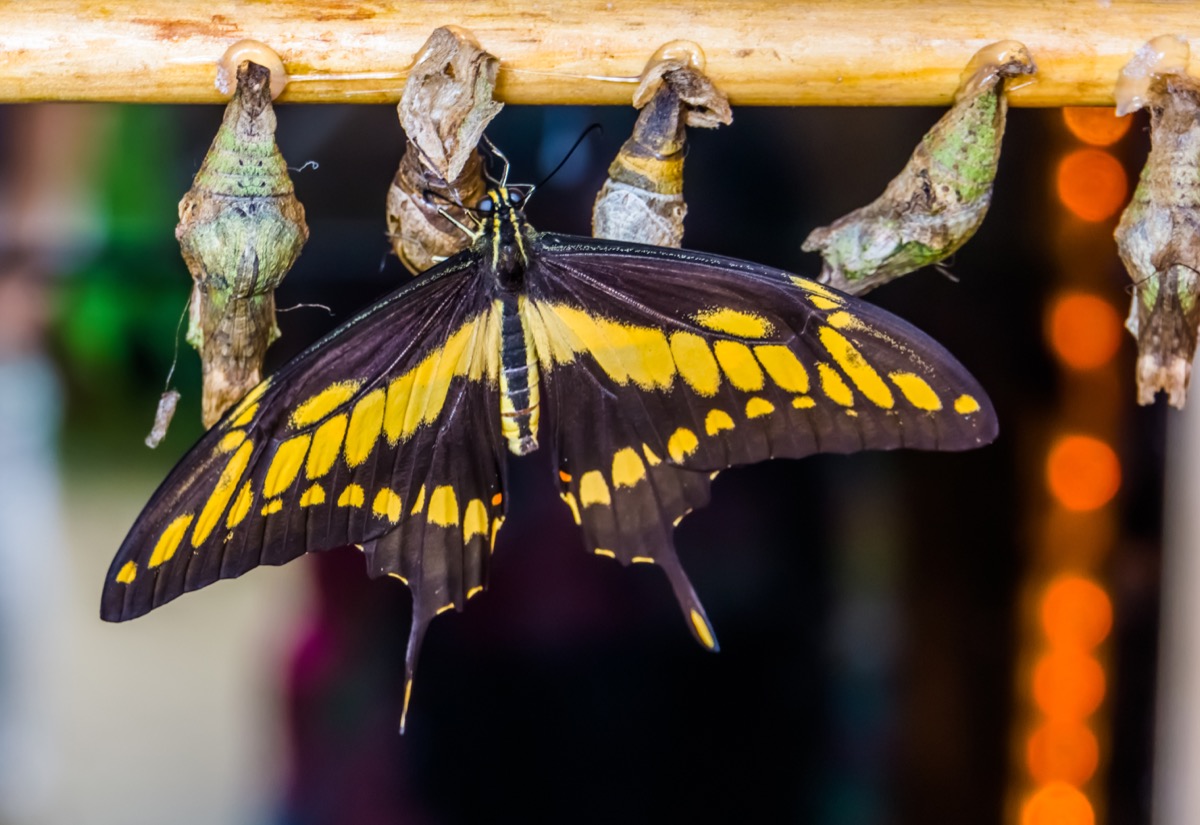
Butterflies are a pretty sight to see outside, but they’re also a good insect for inside your home. Kids can learn a lot from their metamorphosis since they are born as caterpillars, and they only have a complete lifespan—including the metamorphosis—of six to eight months. Raising them up from a caterpillar, you just need a common plant to feed them, and sticks for them to wander around on, especially in the beginning stage of their life. You can make your own home for them with things around the house or buy a butterfly kit.
11
Praying mantises

Similar to a stick bug, if you’re looking for a low-maintenance insect, think about a praying mantis. According to Lianne McLeod, DVM, with The Spruce Pets, their bodies only grow from one inch to six inches, and in captivity, they only have a life expectancy of up to one year. All they need for a home is a small tank “at least twice as wide and three times as tall” as their body. And in terms of diet, they have a variety of foods they eat: fruit flies, smaller mantids, moths, house flies, and the occasional cricket or mealworm if your mantid is larger. But what about the cost to buy this insect? Seeing as most praying mantises are taken from the yard outside the home and brought in, there’s usually no cost at all!
12
Scorpions
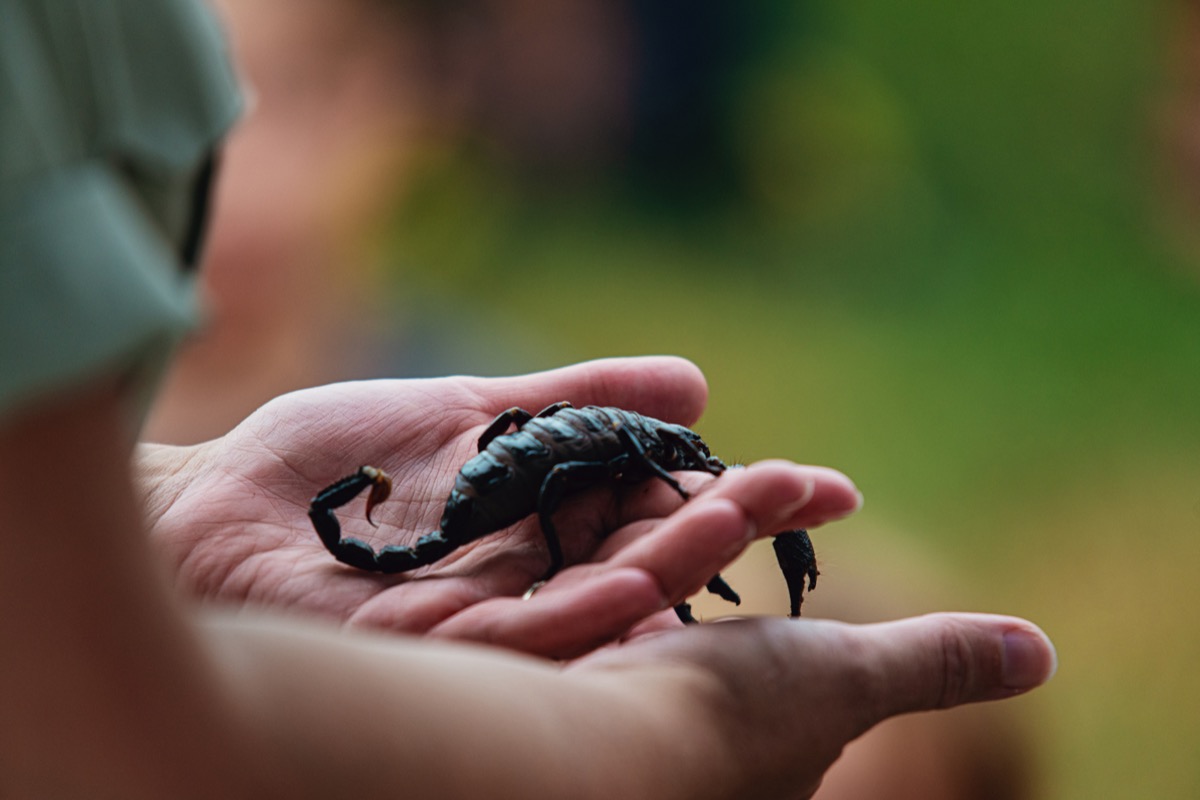
If stick bugs and praying mantises are not satisfying your child’s pet needs, you can always go bigger (and creepier) with a scorpion. This crawly creature only grows three to eight inches long and lives anywhere from two to six years, according to the pros at Petco. With an adult scorpion, you only have to feed it every other day, and their diet consists of insects like crickets, small mealworms, and wax worms. The one thing you really need to remember about scorpions is the temperature of their environment. Unlike other animals, scorpions need a hotter tank—anywhere from 80 degrees Fahrenheit at the coolest to 90 degrees at the warmest.
13
Hamsters

Most kids end up having hamsters as childhood pets because they’re more low-maintenance than other animals. For the most part, hamsters do well on their own. All they need is a cage, fresh water (which can be distributed with a drinking bottle on the side of the cage), hamster food (alongside small pieces of fruits and veggies), and a hamster wheel for them to play and exercise on. Once they have all that, they don’t need much else. Kids can take them out of their cages to gently play with them every once in a while, but as long as they have the basic necessities, they’re happy.ae0fcc31ae342fd3a1346ebb1f342fcb
14
Rats
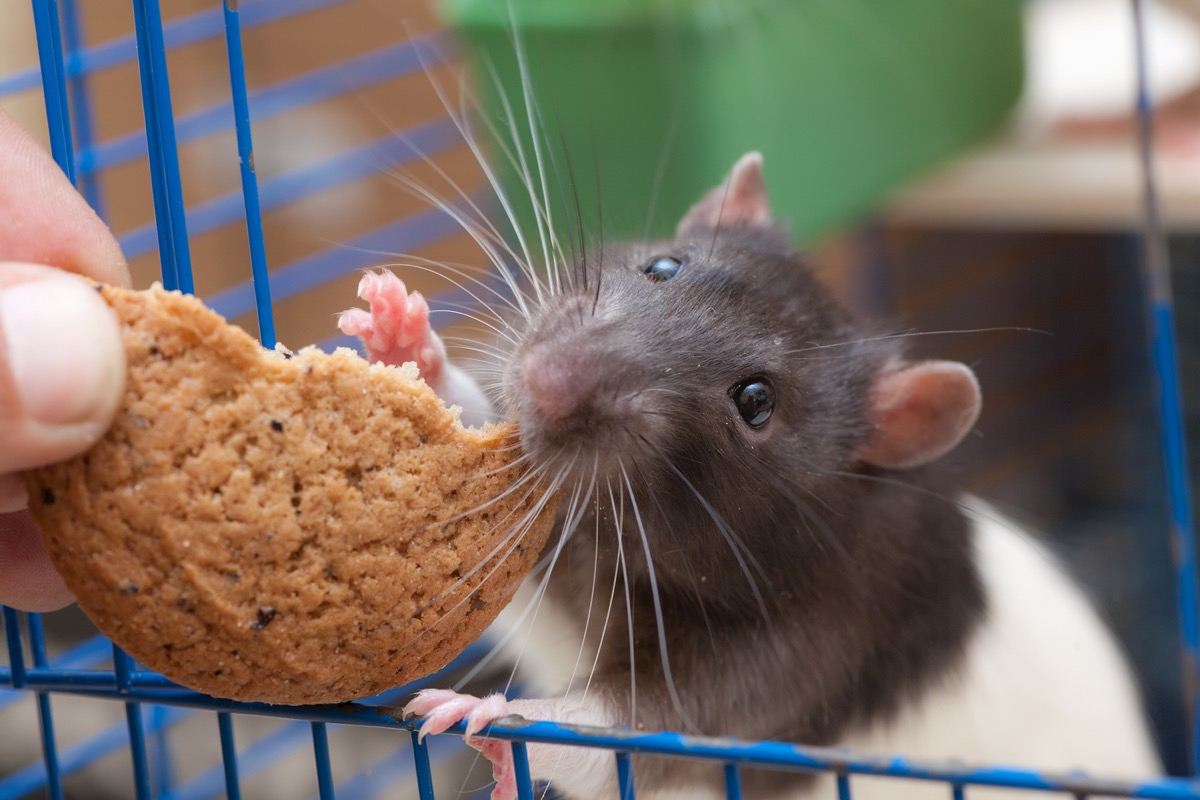
Hamsters aren’t the only easy-to-care for rodents you can consider for your home. While the idea of rats draws forth troubling images of sewers and dirty corners, pet rats are anything but dirty animals. According to Laurie Hess, DVM, with Vet Street, they actually groom themselves and organize their food into neat piles, making them one of the neatest pets you can own. Norway rats are the most common species of pet rat, and they only live two to three years, and grow nine to eleven inches long.
15
Chinchillas
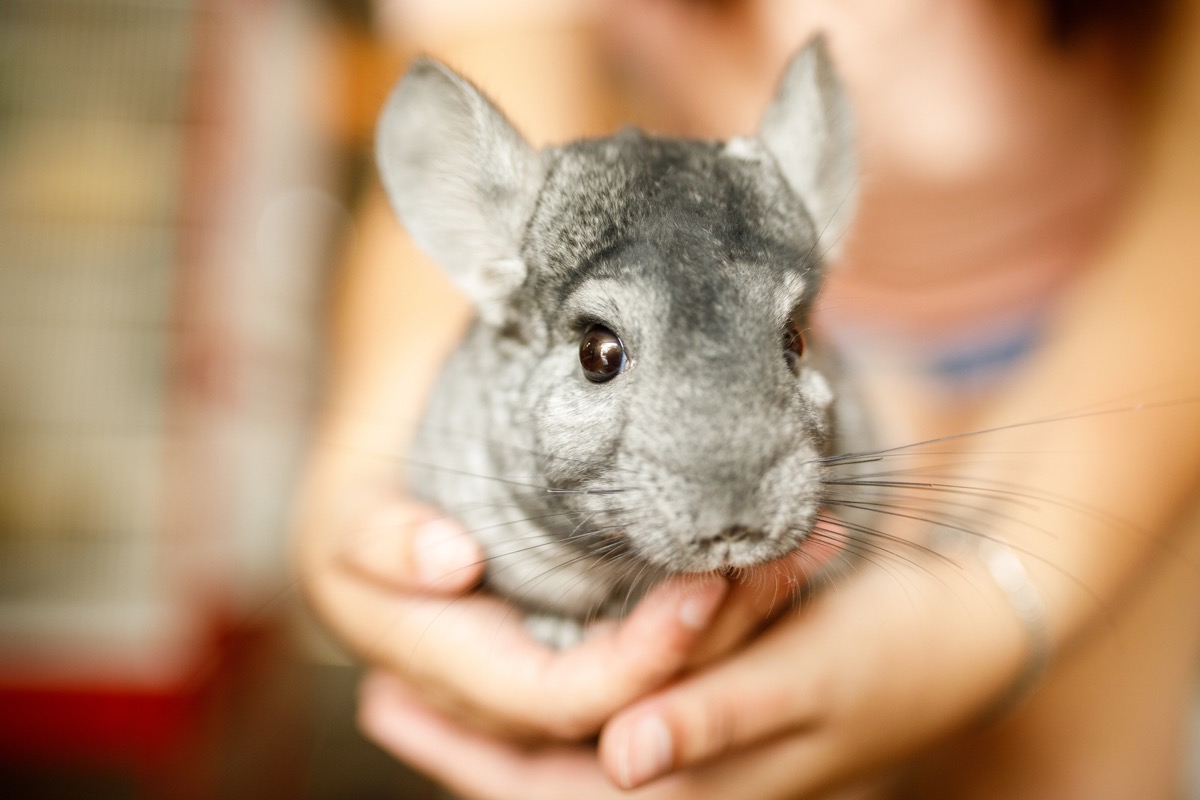
Perhaps the cutest low-maintenance pet you can own is the chinchilla. As McLeod wrote for The Spruce Pets, these adorable creatures actually prefer not to be held that much, so if you’re looking for a pet you can keep at arm’s length but still love, this may be the one for you. Like most rodents, they really just need a large, active cage lined with nesting. However, they do require a diet of chinchilla-specific food, which can be bought at a local pet store.
16
Tarantulas

If you’re not against keeping spiders as pets, a tarantula might be a good addition to your family. Male tarantulas grow from two to ten inches, and most species only live up to seven years long, according to the experts at Petco. Tarantulas just need a suitable terrarium to roam around in, and they eat live insects like crickets, mealworms, super worms, and roaches. The one thing to remember about these creatures is that they need to be kept in a dark part of your room, away from sunlight.
17
Leopard geckos
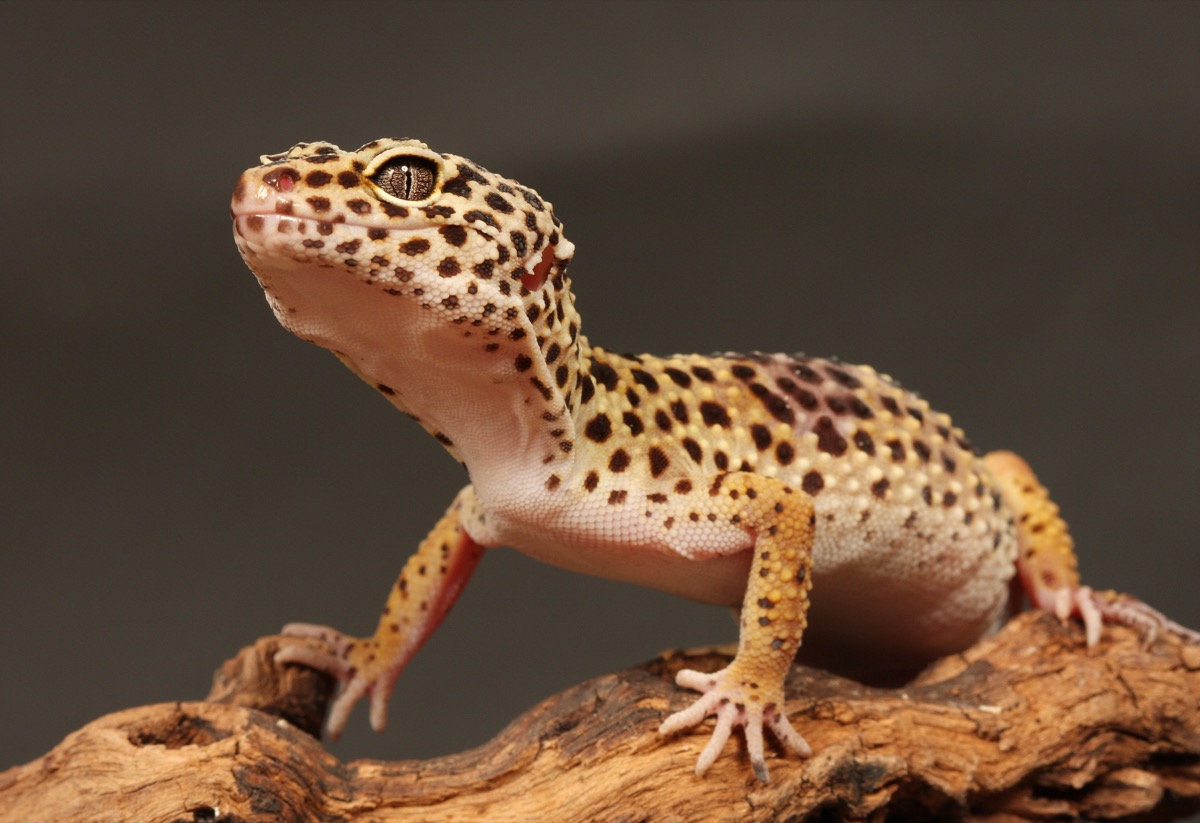
Don’t forget about the geckos! A leopard gecko is the perfect pet for any family or apartment-dwelling young adult. As McLeod explained to The Spruce Pets, they have a docile nature that makes them easy to get along with and play with, but they also don’t need a lot in terms of care. A 15- to 20-gallon tank can easily hold two to three leopard geckos, and they have a normal diet of crickets, wax worms, and mealworms. Not only that, but these reptiles can live up to 20 years or more as pets, so they’re perfect if you’re not looking to say goodbye to your animal too soon.
18
Snakes

Snakes are not everybody’s cup of tea, but they do make for an easy-to-care for pet. According to John Virata with Reptiles magazine, good beginner pet snakes include the corn snake, California kingsnake, rosy boa, gopher snake, and ball python. The most popular is probably the corn snake because it’s a fairly docile snake, and they don’t grow that large—two to five feet in length at most. In terms of diet, corn snakes primarily eat rodents and can also find a tasty treat within a quail egg.
19
Snails
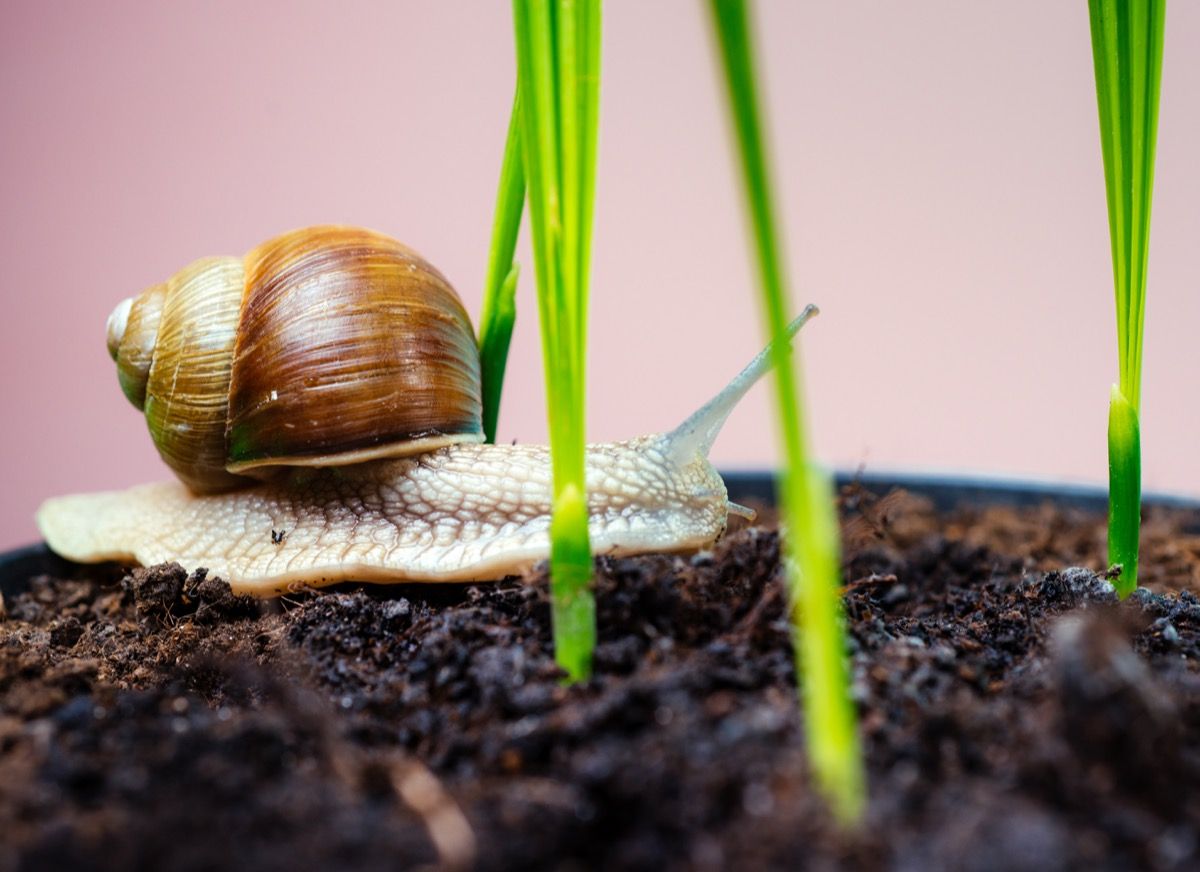
Can you imagine an easier pet to care for than a snail? For the most part, they’re just a pet you observe—no need to take it for a daily walk. They should be kept in a clear terrarium, and you can house multiple snails together, with one to two inches of soil, says Anne Woods with Pets on Mom. Their diet consists of small bits of apples, carrots, and cucumbers with chalk, egg shells, or cuttlefish bone for calcium to “strengthen your snails’ shells.” Other than that, you just need to clean your snails’ terrarium at least once a week, spraying the walls with water and paper towels to clear mucus trails. Simple!
20
Dwarf frogs
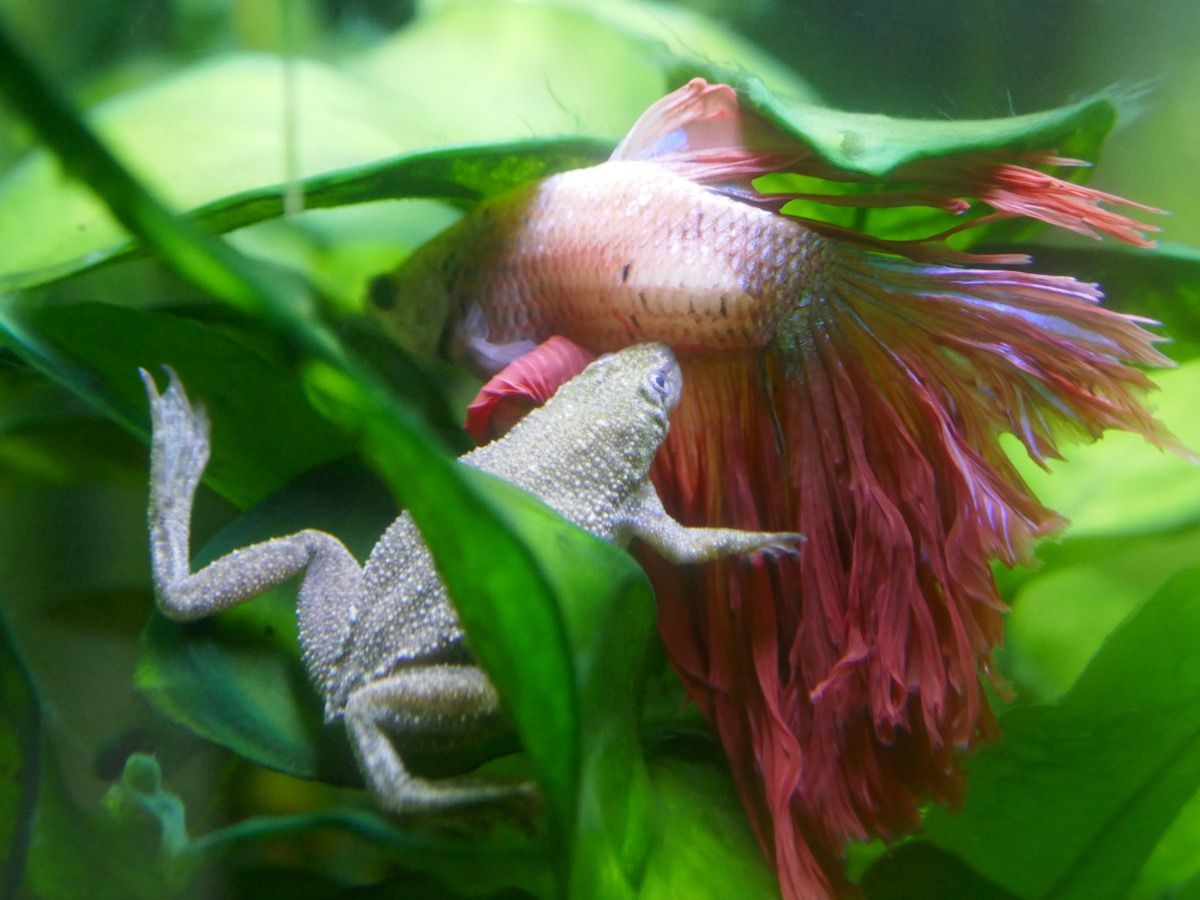
Still on the search for the perfect small amphibian? The African dwarf frog may be the pet for you! They only grow an average of one-and-a-half inches and live up to five years, according to the pros at Petco. In terms of food, their diet consists of bloodworms, brine shrimp, and frozen mysis shrimp. They live in an aquarium, where the water quality should be checked at least once a week and changed every two to four weeks. As a bonus, they can live harmoniously with docile fish—like a betta—if you want more than one kind of pet.
21
British Shorthair cats
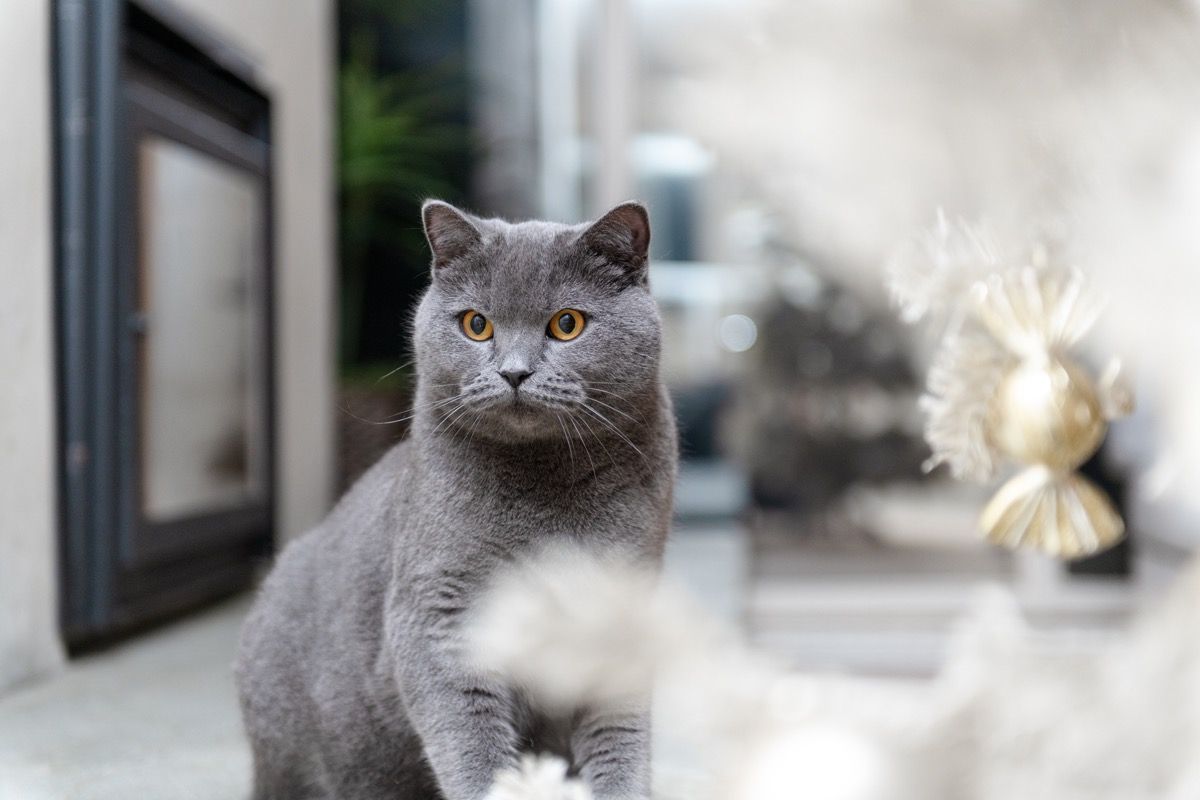
If you’re not ready to give up your dreams of having a cat, consider a more low-maintenance cat breed like a British Shorthair. According to Vet Street, these cats are pretty easygoing. They’re not “generally a lap cat” but will stay close by, and can get along with both dogs and children. And since their hair isn’t as long as other cats’, they only need to be brushed two to three times a week to get rid of loose hair. No need for constant trips to the groomers!















![Toni Kroos là ai? [ sự thật về tiểu sử đầy đủ Toni Kroos ]](https://evbn.org/wp-content/uploads/New-Project-6635-1671934592.jpg)


